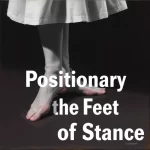Teaching Ballet Terminology to Beginners

Introduction
Ballet is a beautiful and intricate art form that requires not only physical skill but also a deep understanding of its unique terminology. For beginners, learning ballet terminology can be daunting, but it is an essential part of mastering the discipline. This article aims to provide a comprehensive guide to teaching ballet terminology to beginners, ensuring that they build a strong foundation for their future in ballet.
The Importance of Ballet Terminology
Why Terminology Matters
Ballet terminology is the language of ballet. It allows dancers to communicate effectively with their instructors and peers, understand choreography, and execute movements correctly. Without a solid grasp of ballet terms, students may struggle to follow instructions and progress in their training.
Building a Strong Foundation
Learning ballet terminology from the beginning helps students develop a strong foundation. It ensures that they understand the basic principles of ballet and can build upon them as they advance. This foundation is crucial for preventing injuries and achieving technical proficiency.
Strategies for Teaching Ballet Terminology
Start with the Basics
When teaching ballet terminology to beginners, it’s essential to start with the basics. Introduce fundamental terms and concepts before moving on to more complex vocabulary. Here are some key terms to begin with:
- Plié: A bending of the knees.
- Tendu: A stretched movement of the leg and foot.
- Relevé: Rising onto the balls of the feet.
- Port de bras: The carriage of the arms.
- Arabesque: A position where one leg is extended behind the body.
Use Visual Aids
Visual aids can be incredibly helpful when teaching ballet terminology. Use diagrams, videos, and illustrations to show students the correct positions and movements. Visual aids can reinforce verbal explanations and help students grasp concepts more quickly.
Incorporate Repetition
Repetition is key to learning ballet terminology. Encourage students to practice the terms and movements regularly. Incorporate terminology drills into each class, and use the terms consistently when giving instructions. Over time, students will become more comfortable with the vocabulary.
Provide Context
Help students understand the context and history behind ballet terms. Explain the origins of the terms, many of which are in French, and how they relate to the movements. This can make the terminology more meaningful and memorable for students.
Interactive Learning
Engage students in interactive learning activities. For example, create flashcards with ballet terms and their definitions, and have students quiz each other. Organize games and challenges that require students to use the terminology correctly. Interactive learning can make the process more enjoyable and effective.
Common Challenges and Solutions
Pronunciation Difficulties
Many ballet terms are in French, which can be challenging for beginners to pronounce correctly. Provide phonetic spellings and practice the pronunciation with students. Encourage them to listen to recordings of native speakers or experienced dancers to improve their pronunciation.
Retention Issues
Remembering ballet terminology can be difficult, especially for young students. Use mnemonic devices and associations to help students remember the terms. For example, associate the term “plié” with the action of bending, as in “pleat” in fabric.
Overwhelming Vocabulary
The sheer volume of ballet terminology can be overwhelming for beginners. Break down the vocabulary into manageable chunks and introduce new terms gradually. Focus on mastering a few terms at a time before moving on to more.
Practical Tips for Instructors
Be Patient and Encouraging
Learning ballet terminology takes time and practice. Be patient with your students and provide positive reinforcement. Celebrate their progress, no matter how small, and encourage them to keep practicing.
Use Consistent Language
Consistency is crucial when teaching ballet terminology. Use the same terms and definitions consistently in your instructions. This helps students become familiar with the vocabulary and reduces confusion.
Incorporate Terminology into Warm-Ups
Integrate ballet terminology into your warm-up routines. Use the terms when guiding students through stretches and exercises. This reinforces the vocabulary and helps students associate the terms with the corresponding movements.
Encourage Self-Study
Encourage students to study ballet terminology outside of class. Provide them with resources such as books, websites, and videos that explain the terms and demonstrate the movements. Self-study can reinforce what they learn in class and accelerate their progress.
FAQ
How long does it take to learn ballet terminology?
The time it takes to learn ballet terminology varies depending on the student’s dedication and practice. With regular practice and consistent reinforcement, most students can become comfortable with basic terminology within a few months.
Are there any online resources for learning ballet terminology?
Yes, there are many online resources available for learning ballet terminology. Websites like BalletHub and YouTube channels dedicated to ballet offer tutorials, videos, and articles that explain and demonstrate ballet terms.
Can adults learn ballet terminology as easily as children?
Yes, adults can learn ballet terminology just as effectively as children. While children may have an advantage in terms of language acquisition, adults often have better focus and discipline, which can aid in learning.
Is it necessary to learn the French terms, or can I use English translations?
While some instructors may use English translations, it is generally recommended to learn the French terms. French is the universal language of ballet, and knowing the French terms allows dancers to communicate effectively with instructors and peers worldwide.
How can I practice ballet terminology at home?
Practicing ballet terminology at home can be done through various methods. Use flashcards, watch instructional videos, and practice the movements in front of a mirror. Consistent practice and repetition are key to mastering the terminology.
Conclusion
Teaching ballet terminology to beginners is a crucial aspect of their training. By starting with the basics, using visual aids, incorporating repetition, providing context, and engaging in interactive learning, instructors can help students build a strong foundation in ballet vocabulary. Overcoming common challenges such as pronunciation difficulties, retention issues, and overwhelming vocabulary requires patience, consistency, and encouragement. With the right strategies and resources, both instructors and students can achieve success in mastering ballet terminology, paving the way for a rewarding and fulfilling journey in the world of ballet.





